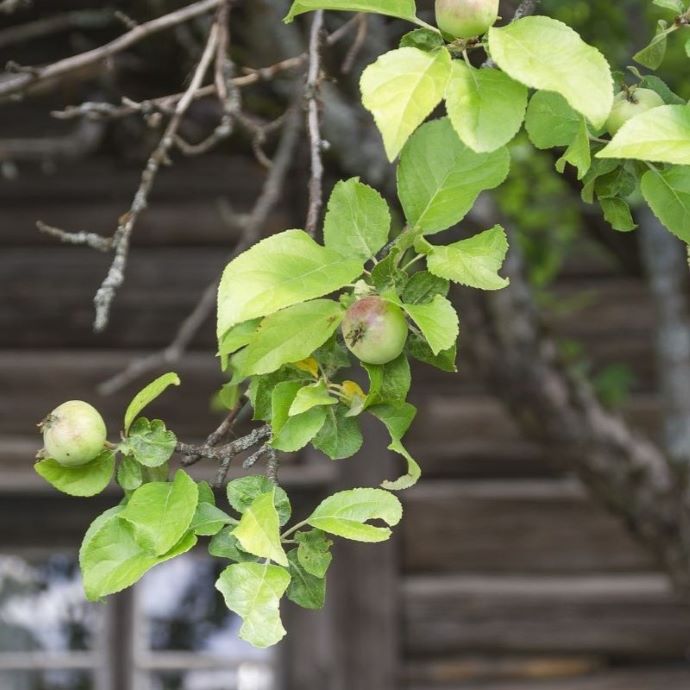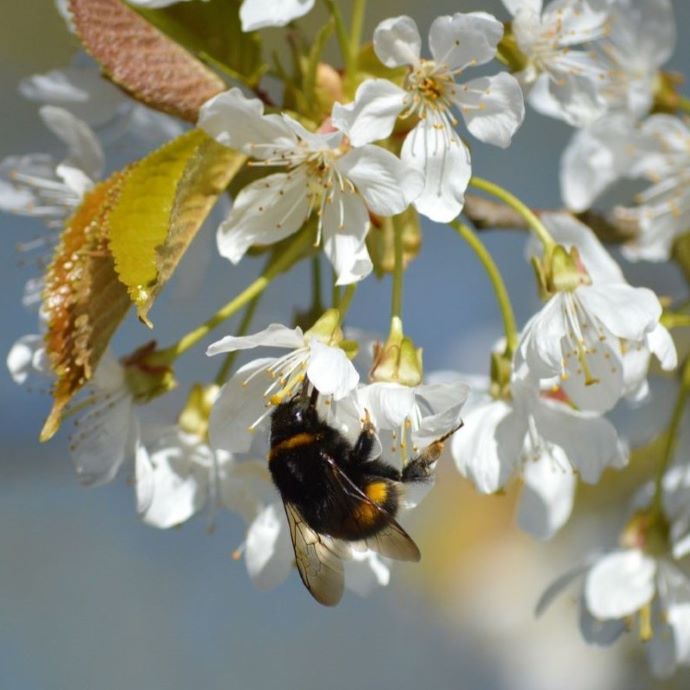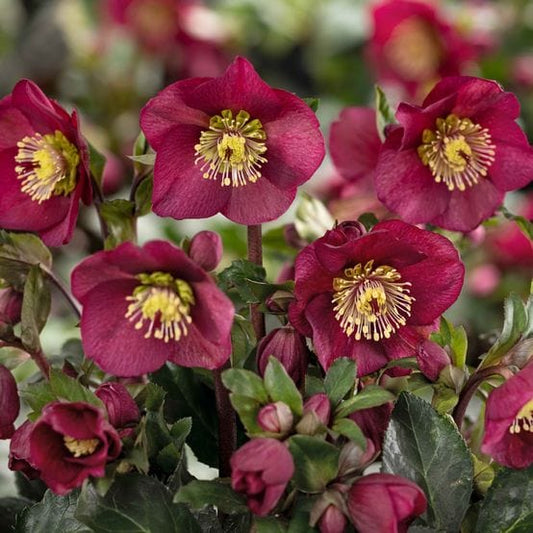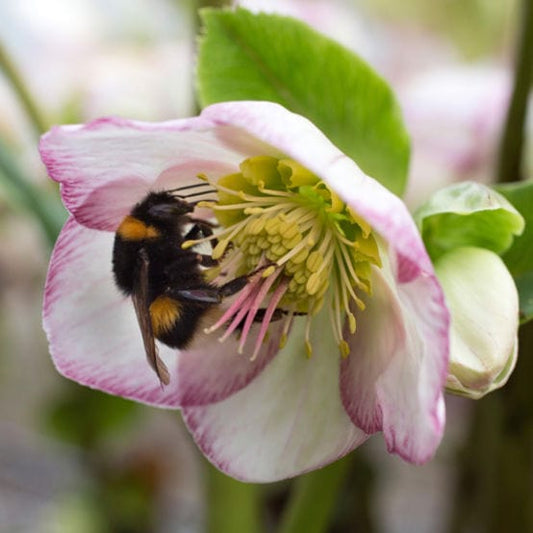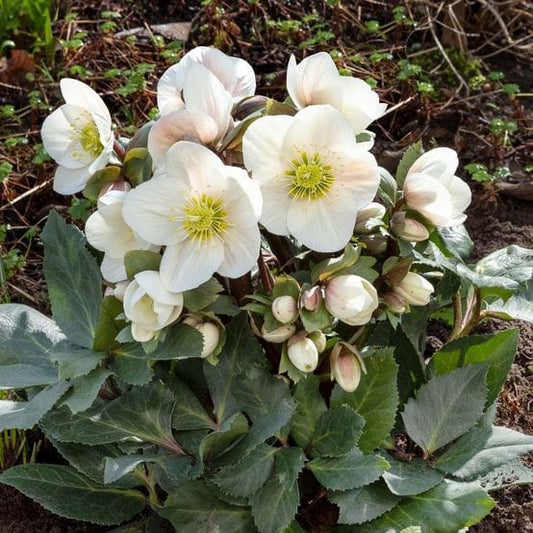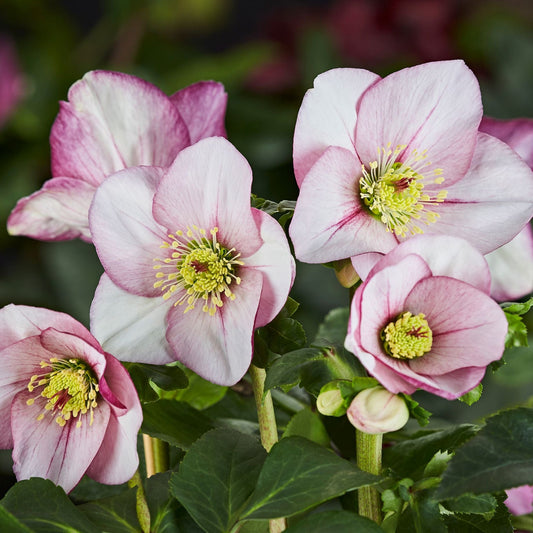Winter Hanging Baskets: Ideas, Plants & Tips
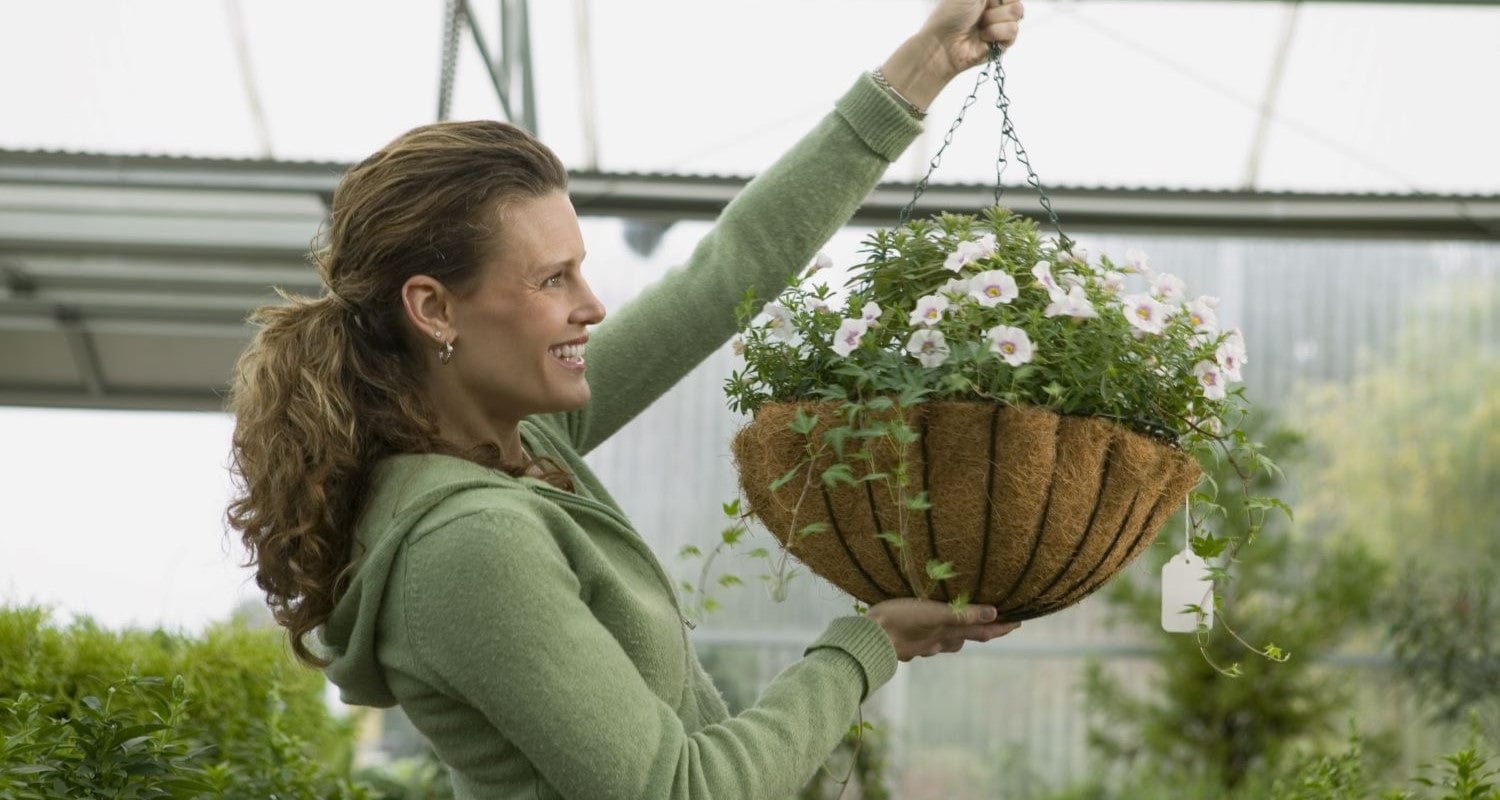
I usually feel a bit sad when I take the hanging baskets down in autumn, and try to resist doing it for as long as possible. This year however, I refuse to let go, so I’m refreshing them with an assortment of evergreen and perennial plants that will see me through the winter and all year round. Because if there’s a time of year you need a plant-based mood boost when you come home, then surely it’s now! With a little help from our perennial and climbing plant growers, I’ve put together some winter hanging basket ideas to brighten your garden all through the colder, gloomier months.
And if you don’t have hanging baskets, all of these plant combinations look equally good in a window box, balcony planter or patio pot.
Jump to:
- Planting a new hanging basket
- Refreshing an old hanging basket
- Best plants for winter baskets
- Caring for winter hanging baskets
How to plant a winter hanging basket
If you’re starting your hanging basket from scratch, take a look at this guide, which shows you what you’ll need and how to plant up a new hanging basket.
Refreshing an old hanging basket
If you’re taking down your old basket and giving it a seasonal revamp, here’s how to prepare it for your new winter plants.
- Remove the old plants and soil from the basket. You can put any dead annual plants on the compost heap and tip the soil onto your borders. If any are showing signs of life, you can replant them in a pot ready for next spring.
- Get your new plants ready - give them a drink of water and remove them from their nursery pots.
- Clean the basket if necessary and refill it with compost to about 3-5cm below the rim.
- If you’re using general purpose compost, you may want to add water retaining granules and slow release plant food. Basket and container compost tends to contain both of these already, but can be hard to get your hands on at this time of year.
- Arrange your plants to their best advantage, with trailing plants around the edges of the basket, tall plants in the centre and lower growing plants in between. You can plant closer together in a hanging basket than you would in the ground, but make sure your plants aren’t too crowded.

The best plants for winter hanging baskets
Most hanging basket and container plants you tend to see over the winter are violas and pansies, but much as I love to see these cheerful little annual flowers, they only last one season before they have to be thrown away, which isn’t the most sustainable way to plant and is also kind of depressing.
To make your plants last throughout the winter (and for years to come), it’s best to use long-lived perennials and evergreens. They look more natural, don’t need as much maintenance (as they’re hardier) and save you work in the long run, as they’ll last for years. If you’re struggling to find a sunny spot for your basket, choose shade tolerant plants like ivy, heuchera and ferns.
To make your winter basket look well balanced and full of life, there are three types of plants you should aim to include.
Trailing plants
Trailing plants are those that cascade downwards over the edge of your hanging basket. A hanging basket made up entirely of trailing plants can look really spectacular on its own, too.
- Ivy - an award winning variegated ivy which combines emerald and lime green for a fresh, bright look.
- Clematis - this classic clematis is covered in cream-white flowers from December to February.
- Winter honeysuckle - highly fragrant and blooming right from December to March, this is a top choice for your front door.

Plants for the centre
To add height to your basket, plant 1-3 taller, upright plants in the middle of your arrangement that will grow above the rest. Alternatively, you could use a small climbing plant in this position, and train it upwards through the chains of the basket.
- Fern - this lush, feathery fern deserves centre stage, and will tolerate even full shade.
- Hellebore - a dark cherry coloured evergreen that flowers continuously from January to March.
- Viburnum - covered in soft pink flowers throughout winter and encourages pollinators to your garden.

Plants for the spaces in between
Often called ‘filler’ plants but I don’t think that does them justice! Plant the remaining space in your basket with lower growing plants that will create a middle layer of colour and interest, but don’t forget that these will spread out as they grow, so resist the temptation to plant too many - three or four is plenty.
Do they have to be flowers? Not at all! Foliage plants look beautiful in hanging baskets, especially those with variegated or unusual colouring like heuchera and ajuga.
- Hellebore - hardy hellebores flower throughout winter and into spring - this one is the perfect winter white.
- Heuchera - vibrant green foliage with an added bonus of pink flowers in the summer.
- Ajuga - low growing with glossy, fragrant, almost black foliage.
Need more inspiration?
Here are a few of our favourite combinations.
A pink and purple themed basket
- Heuchera - low growing purple foliage plant with pink flowers in summer.
- Hellebore - Rosetta brings colour to the winter garden with ombre pink tones from December to March.
- Fern - shimmering blue, silver and maroon tones act as the perfect backdrop.
A green and white themed basket
- Carex - shimmering variegated grass for even the shadiest spot.
- Variegated ivy - this striking cream and green ivy has frilled edges and cream flowers too.
- Senecio - tactile silvery-white leaves make this a standout plant.
A festive themed basket
- Hellebore - this snow white hellebore keeps on flowering all the way from December to March.
- Goldchild ivy - gold and emerald ivy to trail over the edges.
- English holly - it wouldn’t be Christmas without the holly to go with the ivy!
An edible basket
- Rosemary - incredibly hardy - snip bits off for your winter casseroles.
- Sage - beautiful, fragrant and handy for making stuffing if that’s your bag.
- Dwarf kale - attractive and ideal for pots and baskets. Cut fresh leaves whenever you need them.
How to care for your winter hanging basket
Watering and feeding
Although the delightful UK weather is no doubt providing enough water for the plants in your garden at this time of year, pots and hanging baskets are a different matter. Even diagonal rain doesn’t always get past the leaves of your potted plants to get right down to the roots, so even if the soil looks wet on top, you should check in case it’s not getting right down to the roots, where it’s needed. As a general rule, check and water your baskets at least twice a week throughout the winter. If you haven’t added any feed to the compost, you can also give your plants a weekly liquid feed for a bit of a boost.
Deadheading
Snip off any dead flowers or leaves to keep your basket looking fresh and tidy. Deadheading the finished flowers will also encourage the plant to produce more.
Weatherproofing your basket
It’s especially important in winter weather to make sure the chains are strong enough for your hanging basket and the hook is secure so that it doesn’t fall down in strong winds. Try to hang it in a sheltered position where it will get as much sun as possible, and check it after strong winds or storms to make sure the soil hasn’t been eroded or the plants damaged.
Room to grow
As these plants are perennials, it’s likely that they’ll outgrow the basket at some point and start to look overcrowded or unhappy. If this happens, just remove one or two plants and replant them in another container or in a border to give the rest some growing space.
Loving your winter hanging baskets? Discover more winter flowering plants and trees to give your garden a complete seasonal revamp.Last updated: 17/11/2023








